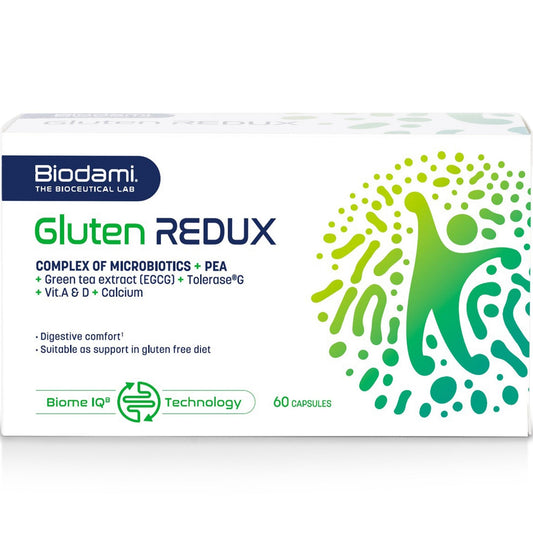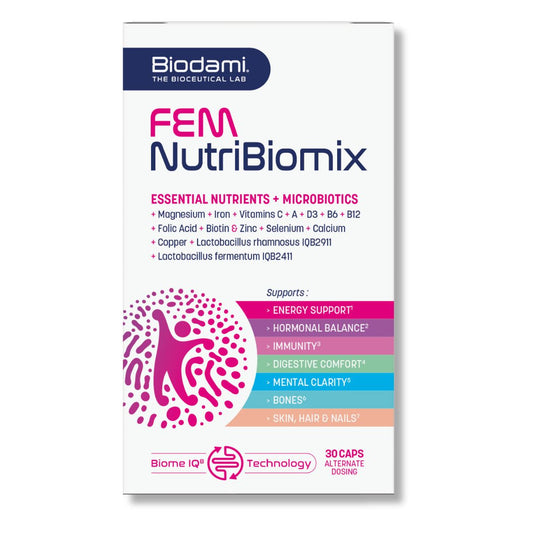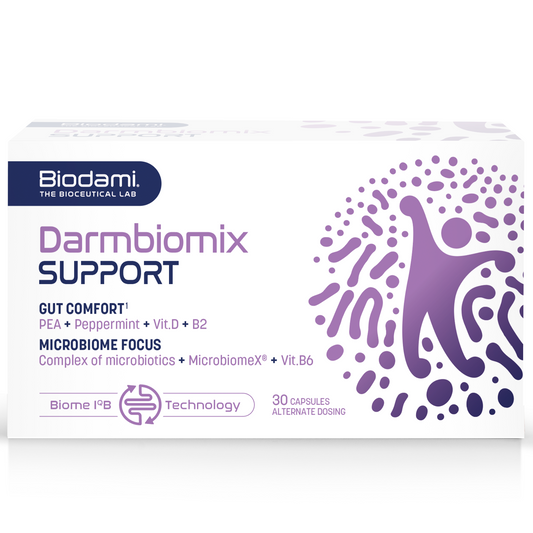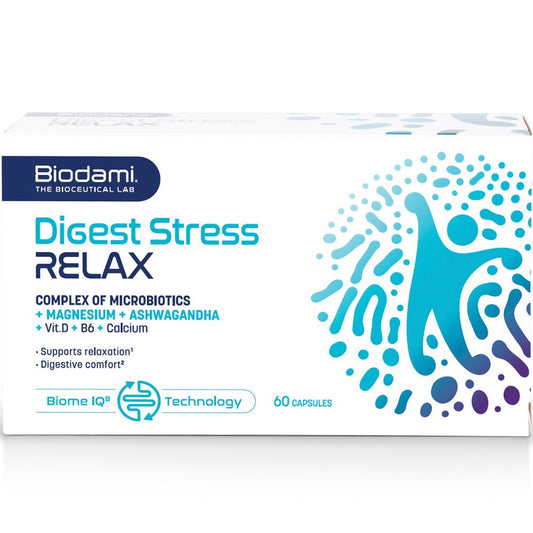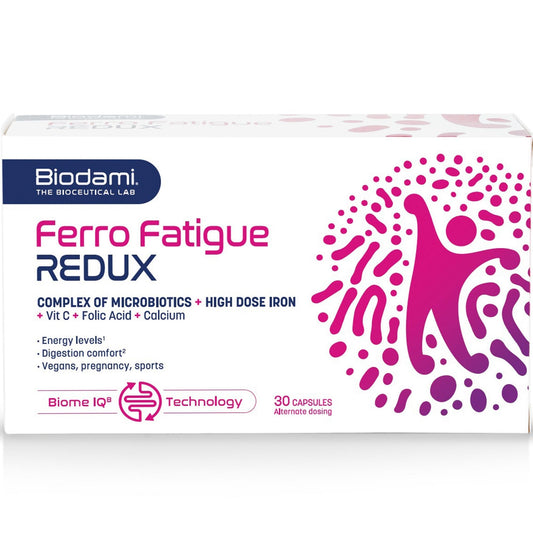WHAT IS GLUTEN?
Gluten is a general name for the proteins in grains of wheat, rye and barley. It is a large complex protein, made up of a complex mixture of 40 proteins of which mainly gliadin and glutenin of which gliadin is the one most responsible for the negative health effects of gluten. Gluten is indispensable in the food industry because it helps foods maintain their elasticity and shape by improving the texture, moisture retention and flavor of the food. Without gluten in your pasta, your pasta would be less elastic [1]

GLUTEN TYPES OF FOOD:
- Bread
- Cookies
- Cakes
- Pasta
- Noodles
- Cereals & Granola
- Sauces and dressings
- Croutons
Gluten is a large molecule and is not easily digested. Digestive enzymes do digest gluten but due to the large proline content of gliadin, these enzymes are not fully capable of digesting gluten into smaller molecules in the gut [2]. With the incomplete digestion of gluten in the small intestine, a series of inflammatory reactions can occur and lead to increased intestinal permeability, damaging the gut barrier causing lesions on the gut mucosa and villous atrophy [3]. Villous atrophy occurs when your intestinal villi —the microscopic, finger-like tentacles that line the wall of your small intestine and absorb nutrients—erode away, leaving a virtually flat surface.

GUT MICROBIOME- CELIAC DISEASE - THE CURSE OF THE LEAKY GUT
Gluten is in many of our foods today. For some individuals, gluten is a cause of an autoimmune disease called celiac disease where consumption of even the smallest amount of gluten leads to acute gut issues Read here about celiac disease. Gluten affects the integrity of the gut wall, becoming leaky and eventually leading to inflammation of the small intestine, leading to impaired nutrient absorption and chronic conditions related to malnutrition [2].
The influx of the gliadin protein (which is the protein most responsible for the sensitivity to gluten) stimulate the release of Interleukin-5, a proinflammatory cytokine that signals a cascade of inflammatory reactions, mediated by T cell activation which ultimately results in the cells producing anti-gliadin antibodies promoting further immune response, leading to a vicious cycle of consistent gut inflammation.
In the early 2000s, researchers discovered a molecule that seems to play a big role in maintenance of gut stability and the cause of leaky gut. The molecule ZONULIN is responsible for opening gaps between two epithelial cells of the gut lining- also called the tight junctions (see figure below)

Source image: Radcliff et al, 2019
Zonulin is part of a homeostatic process. It allows the entrance of nutrients. But in celiac disease, there is an overexpression of zonulin leading to the sustained opening of these tight junctions leading to what we now know as the "Leaky gut" making the gut permeable and allowing overly large incompletely digested food particles such as gluten to cross the epithelial barrier and cause a loss in gluten tolerance [4,5,6] (read more about this here)
The effects of celiac disease on the gut is well recognized. It has been found that patients with celiac disease have a very different microbiome composition than healthy subjects [7]. Though it is important to note that to date, there is not one specific microbiome profile that would characterize celiac disease. Except for the fact patients with celiac disease have been found to have, in general, a lower amount of Lactobacillus and Bifidobacterium strains [8].
A study by Lindfors et al. has highlighted that specific probiotic strains, such as Lactobacillus fermentum or Bifidobacterium lactis, have a protective role against the toxic effects of gliadin in intestinal cell cultures (human colon Caco-2 cells), with the result of dose-dependent inhibition of cell permeability and increased expression of anti-inflammatory cytokines [9]. Other studies have also shown the ability of Bifidobacterial strains to improve gut bacterial composition, to pre digest gluten proteins thereby reducing inflammation [10,11] and in particular the ability of Bifidobacterium breve to provide a better support to children with celiac disease already following a gluten free diet [12]
Such interventions could offer the reversal of the leaky gut-inflammation- exacerbation of celiac where
PROBIOTICS → PREDIGEST GLUTEN → DAMPEN INFLAMMATION → DECREASE PERMEABILITY → RESTORE MICROBIOME etc...
Given the importance of the gut microbiome in celiac disease, our microbiome is becoming the focus of research. This would ultimately also give more options to support patients on their Gluten Free Diet and also adding more support in the event of accidental gluten exposure avoiding complications and severe progression of the disease.
Much research has yet to be done in this field before it becomes routine clinical practice but the results are promising.
Kristina Cueva
Kristina has always had a passion for understanding diseases and their underlying mechanisms. With a Biomedical sciences background as well as Public Health & Economics, Kristina understands the burdens diseases have on society. This helps her understand the necessary innovations to promote good health which ultimately lower the burden of disease.
References:
1. Biesiekierski J. R. (2017). What is gluten?. Journal of gastroenterology and hepatology, 32 Suppl 1, 78–81. https://doi.org/10.1111/jgh.13703
2. Van Buiten, C. B., & Elias, R. J. (2021). Gliadin Sequestration as a Novel Therapy for Celiac Disease: A Prospective Application for Polyphenols. International journal of molecular sciences, 22(2), 595. https://doi.org/10.3390/ijms22020595
3. Van Buiten, C. B., Lambert, J. D., & Elias, R. J. (2018). Green Tea Polyphenols Mitigate Gliadin-Mediated Inflammation and Permeability in Vitro. Molecular nutrition & food research, 62(12), e1700879. https://doi.org/10.1002/mnfr.201700879
4. Fasano A. (2020). All disease begins in the (leaky) gut: role of zonulin-mediated gut permeability in the pathogenesis of some chronic inflammatory diseases. F1000Research, 9, F1000 Faculty Rev-69. https://doi.org/10.12688/f1000research.20510.1
5. Drago, S., El Asmar, R., Di Pierro, M., Grazia Clemente, M., Tripathi, A., Sapone, A., Thakar, M., Iacono, G., Carroccio, A., D'Agate, C., Not, T., Zampini, L., Catassi, C., & Fasano, A. (2006). Gliadin, zonulin and gut permeability: Effects on celiac and non-celiac intestinal mucosa and intestinal cell lines. Scandinavian journal of gastroenterology, 41(4), 408–419. https://doi.org/10.1080/00365520500235334
6. Leonard, M. M., Sapone, A., Catassi, C., & Fasano, A. (2017). Celiac Disease and Nonceliac Gluten Sensitivity: A Review. JAMA, 318(7), 647–656. https://doi.org/10.1001/jama.2017.9730
7. Cenit, M. C., Olivares, M., Codoñer-Franch, P., & Sanz, Y. (2015). Intestinal Microbiota and Celiac Disease: Cause, Consequence or Co-Evolution?. Nutrients, 7(8), 6900–6923. https://doi.org/10.3390/nu7085314
8. Marasco, G., Cirota, G. G., Rossini, B., Lungaro, L., Di Biase, A. R., Colecchia, A., Volta, U., De Giorgio, R., Festi, D., & Caio, G. (2020). Probiotics, Prebiotics and Other Dietary Supplements for Gut Microbiota Modulation in Celiac Disease Patients. Nutrients, 12(9), 2674. https://doi.org/10.3390/nu12092674
9. Lindfors, K.; Blomqvist, T.; Juuti-Uusitalo, K.; Stenman, S.; Venäläinen, J.; Mäki, M.; Kaukinen, K. Live probiotic Bifidobacterium lactis bacteria inhibit the toxic e ects induced by wheat gliadin in epithelial cell culture. Clin. Exp. Immunol. 2008, 152, 552–558
10. Cristofori, F., Francavilla, R., Capobianco, D., Dargenio, V. N., Filardo, S., & Mastromarino, P. (2020). Bacterial-Based Strategies to Hydrolyze Gluten Peptides and Protect Intestinal Mucosa. Frontiers in immunology, 11, 567801. https://doi.org/10.3389/fimmu.2020.567801
11. Laparra, J.M.; Olivares, M.; Gallina, O.; Sanz, Y. Bifidobacterium longum CECT 7347 modulates immuneresponses in a gliadin-induced enteropathy animal model. PLoS ONE 2012, 7, e30744.
12. Klemenak, M., Dolinšek, J., Langerholc, T., Di Gioia, D., & Mičetić-Turk, D. (2015). Administration of Bifidobacterium breve Decreases the Production of TNF-α in Children with Celiac Disease. Digestive diseases and sciences, 60(11), 3386–3392. https://doi.org/10.1007/s10620-015-3769-7
Radcliffe, John & Brito, Luiz & Reddivari, Lavanya & Schmidt, Monica & Herman, Eliot & Schinckel, Allan. (2019). A swine model of soy protein–induced food allergenicity: implications in human and swine nutrition. Animal Frontiers. 9. 52-59. 10.1093/af/vfz025.
Find out how Gluten Redux may help you with your Gluten Free Diet
